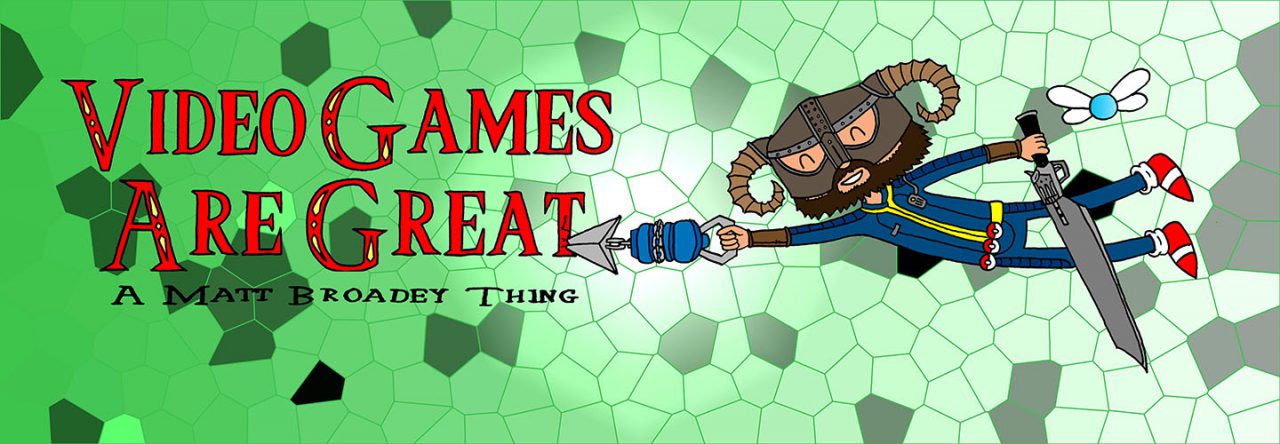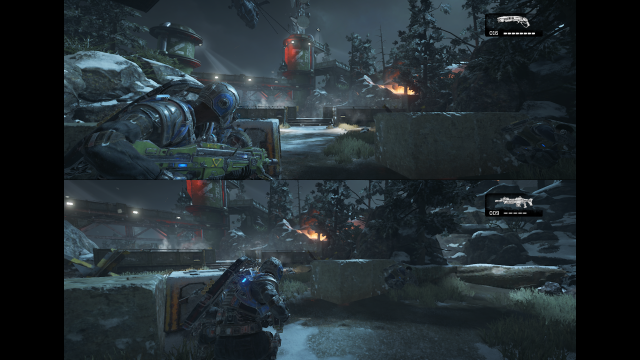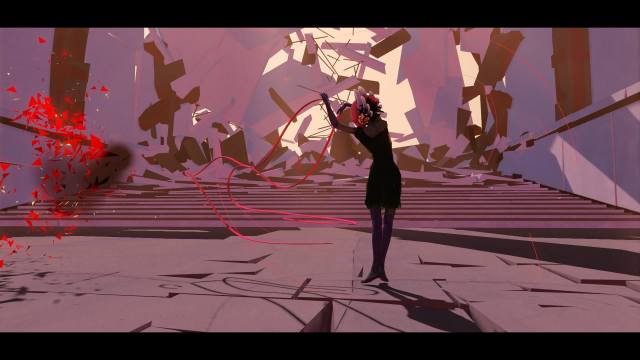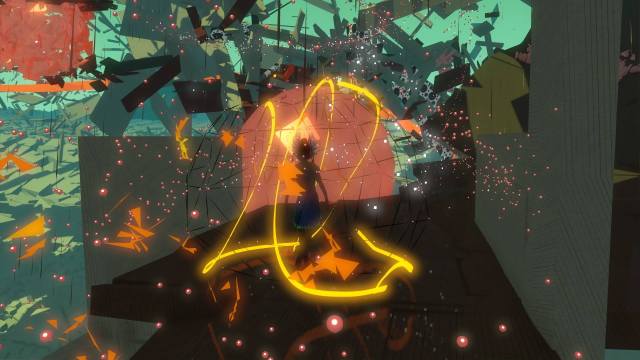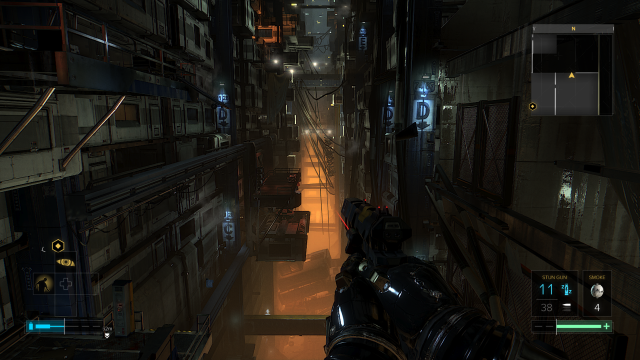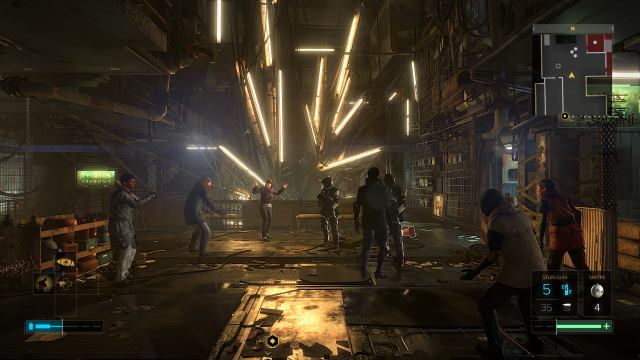Too Human. Aliens: Colonial Marines. Duke Nukem Forever. All are famous for their promise, their hellishly delayed development times, and ultimately, their disappointment. This isn’t just endemic to games, either; just look at Chinese Democracy and Alien vs. Predator. The culmination of years of held breath, of stolen glimpses punctuating the overwhelming silence as teams worked hard behind closed doors. Each project fell into myth, almost; a growing, creeping sense of disbelief that the promised game would ever make its way to your expectant disk tray.
The allure of these games, the hope and the fear, overgrows and strangles our perceptions of the subject. “Surely they’re not still working on it”, we think. “When that thing was announced, so and so was president”. “I’ll believe that release date when it’s right there on the shelf next to all the season passes and worthless preowned copies of Battleborn.”
And yet, despite the signs of troubled formation, there’s always that hope, right? You can’t have greatness without ambition, and for a team of people to dedicate a decade of their careers to something, you’d certainly hope it was worth the time of every hand that touched it. Sadly that’s not often the case; consider the three key examples of Too Human, Colonial Marines, and DNF. One was widely regarded mediocre at very best, while the other two were so reviled that many questioned the sanity of Gearbox in pushing their tired, broken corpses up to the finish line.
From company so often bound for failure, two high-profile releases managed to break free of the cycle of delay and rub their elbows with the very greatest games of 2016… with a handful of asterisks each. Both long-awaited instalments of beloved Japanese series, both nudged back with a final apologetic delay for spit-and-polish, and both fully capable of taking your breath away. 2016 was something of a shitstorm, but at least the demoralisation was softened by the one-two punch of Final Fantasy XV and The Last Guardian.

Final Fantasy XV began life as Final Fantasy Versus XIII in 2006, and surprisingly little of the game’s spine (at least the core narrative and play themes) seems to have altered since its reveal trailer in 2008.
Final Fantasy XV’s vast and beautiful world is a spellbinding place to inhabit, brimming with side quests, treasures, and monsters to hunt. Truly impressive, though, is its handling of its main cast – Prince Noctis and his companions Gladiolus, Prompto, and Ignis – as they sweep across the Americana-tinged countryside of Lucis. Every detail and mechanic surrounding the group’s dynamic successfully compounds and deepens their relationship. The incidental dialogue highlighted the companionship well – for some reason I find it especially memorable that Ignis turned to Prompto as we approached a waiting active volcano and checked that his beloved camera would be alright in the heat.
Beyond this, though, lies a wealth of mechanics to further carve and mould these relationships beyond the script. Camping together, choosing meals from Ignis’ repertoire, and leafing through the pictures Prompto has snapped during the day while your companions critique the shots; every time I set a campfire I relished not just the stream of experience from the day’s activities but the easy companionship of these friends around the fire.
Combat is a fresh cocktail of the old and new; the base is a grand departure in the form of explosively balletic action with hints of Final Fantasy’s familiar juggling of weapons, abilities, and status effects. You could be forgiven for laying eyes on Final Fantasy XV and initially confusing it for a straight-up action game, but the strategic elements elevate the experience from one that tests the reflexes to one that engages your mind, too. And even in the heat of the action, Final Fantasy XV emphasises the bond between you and your teammates: cooperative Link Strikes and Parries trigger when you attack enemies whilst yourself and an ally are in a certain position, and your friends are prone to lending you their advice as you approach a difficult encounter, which you can follow for valuable skill points.
In nearly every conceivable part of the game, Final Fantasy XV succeeds in exploring and examining platonic male relationships with a depth and deftness rarely seen in a medium whose primary preoccupation with the theme is limited to gruff banter and no-homo-brohugs. There’s a real affection between the men you guide through Lucis, and that emotional core is the game’s biggest achievement underlying its mechanical triumphs.
It’s unfortunate, then, that my recommendation of Final Fantasy XV be marked with some pretty big caveats. Firstly, despite the game’s fantastic underlying narrative of the developing relationship between the protagonists, the actual plotted story is obtuse, impenetrable through its incompletion, and tiresomely unoriginal.

Despite the great group dynamic, Noctis is an unlikeable shit, his *ugh, whatever* affectation varying in minute degrees no matter how you choose to have him react to others. Aside from that, it irks me that all his boons were received by birthright: his powers, his friends, his fiancé, and of course his kingdom. He shows few redeeming features besides determination and a begrudging sense of duty until late in the game, when his preceding presence has already grated away any sympathy you may have otherwise held for his plight.
Finally, and perhaps most vexingly, the last few hours of story missions do away with everything about the game that charmed us with for the first 25 hours (if you’ve followed the story pretty doggedly). The inventively snappy combat, the breadth of the world, interaction with your squad, even colour itself; all gradually pruned and filed and clipped away for the last few chapters of the story. I realise it could be argued that there’s a certain narrative purpose behind these decisions given the progressing graveness of the story. However arguments for this being a collection of conscious creative decisions are undermined by game director Hajime Tabata’s pledge to “patch in more story” and “fix” (read: make bearable) the most offensive chapter.
I’ve got to wonder about Final Fantasy XV’s development in relation to these glaring issues of storytelling and late-game woes that should by all rights have been ironed out by playtesting and common sense somewhere along its decade-long gestation. I would posit that vast parts of the game’s structure and story must have been scrapped and reworked, leaving little time to work on its lacking portions. I guess they didn’t want to disappoint everyone with yet another delay.
With the complexity of Final Fantasy XV, it’s relatively easy to explain both its long development and its shortcomings. The Last Guardian, however, is a much more streamlined and linear experience; which makes sense, considering Team Ico’s past work and Fumito Ueda’s well known design philosophy of “design through subtraction” that sees the removal of any superfluous elements in order to distil a desired feeling. The Last Guardian aims to be a single dish designed to please your taste buds in a specific way, while Final Fantasy XV offers a sprawling multi-course banquet. Even when you take the relatively diminutive team size into consideration, the scale of the project certainly doesn’t mesh with the time it took to produce the thing.

The Last Guardian is a linear action-adventure game following an unnamed boy and gigantic feathered creature Trico as they attempt to escape a hauntingly quiet valley of treacherous crumbling architectural beauty. The player’s focus might be to escape, but in a much wider sense, the game’s focus is to develop and convey the relationship between Boy and beast, and that’s the real story of the game.
The game’s core mechanics lend themselves well to the central theme. Boy and Trico are brought and held together by the need for survival, and their reliance upon each other is constantly reinforced. The Boy’s physical weakness is compensated for by Trico’s brute strength, while Trico’s overwhelming size and animal intelligence is complemented by Boy’s nimble slightness and human intellect.
Underlying this vital reliance is the highly tactile nature of the game, grounding you in the world’s mystery and Trico’s presence. There’s a very real sense of physical presence and you clamber, grasp, and manhandle your way through The Last Guardian. This, of course, extends to Trico itself – a prominent mechanic involves riding and petting the beast at different positions on his body to encourage different behaviours.
Such effort to cement you so tangibly in the world wouldn’t do much good if it wasn’t an appealing place to inhabit, but Team Ico has crafted an achingly beautiful place; a blank enigma for you to unwrap and examine as you traverse its abandoned majesty. The sense of awe and beauty is at once unique and recognisable to anyone that’s sunk into Ico or Shadow of the Colossus. Teetering tower-like structures punch up towards the sky like solemn sentinels to the silent place, while inside their walls you’ll want to run your fingers over long-eroded glyphs that adorn the walls and explore outer courtyards in the slow process of reclamation by nature. The Last Guardian’s valley is a beguiling, brooding masterpiece of danger and contemplation. The faceless, possessed suits of armour that make up the game’s primary antagonists feel like the personification of that implied threat, dispassionate and deadly in their resistance to your trespass.

Sound design is not to be underestimated, either, with a rich auditory landscape laid over the physical one. Your footsteps slap and echo through yawning halls, ancient mechanisms screech from untold ages of disuse, and omnipresent wind whistles through the bricks of the high towers.
All that work goes a decent way towards achieving the exact atmosphere that Team Ico want to achieve, but that effort is hobbled by fundamental missteps in the core game design. Chief amongst these issues is Trico itself. Despite the fantastic work evident in its characterisation through animation and lovable design, his responsiveness will test the limits of even the most patient players. This is an understandable decision, at least in the The Last Guardian’s opening chapters; Trico is a wild animal, and you’ve got to earn each other’s trust. Its unruly streak does go some way towards building Trico up as a believable creature with agency rather than a simple AI minion under your Beast Master-esque control. A more “realistic” Trico should lead to a more meaningful relationship, right? But the frustrations of such ponderous response times ultimately take you right out of the game and plant a kernel of resentment for the idiot animal, which runs in direct opposition to the game’s intent. Trico does steadily become more responsive for the first half of the game, but the long periods of bellowing at it to “please just fucking jump over there” never go away, right up to the last portions of the game.
Another fundamental issue – and one that may be far more embarrassing for Team Ico – is that the Boy controls like a dizzy infant on whatever drugs the kids are into these days. Movement feels enduringly imprecise and clumsy, past the point that would have appropriately conveyed the Boy’s inexperience and fragility. The camera is stiffly unhelpful, often preferring to take a firm interest in Trico’s (immaculately rendered) arsehole rather than providing a helpful view of the level. These issues could be forgiven in Shadow of the Colossus, where gaping landscapes and vast enemies required only broad strokes to wrangle successful accuracy from Wander’s movements. In the narrower, dense, more platform-heavy environments of The Last Guardian, those gripes stick out like a sore thumb and rudely overshadow your immersion.
There’s no question to me as to which game was more deserving of the wait; Final Fantasy XV might be marred by myriad shortcomings, but I get the overwhelming feeling that its issues are more a product of ambition than anything else. The Last Guardian, meanwhile, feels like it’s fallen by the wayside through a certain blinkering effect; stagnant portions of the game’s design allowed to seep into and impair the experience against better judgement. It would seem that the wider market reflects my lopsided opinion of these games, too; whilst Final Fantasy XV happily announces DLC plans and ongoing support, The Last Guardian recently endured a permanent price drop of $20. All caveats aside Final Fantasy XV and The Last Guardian are unquestionably worthwhile experiences that sit amongst the best games of 2016. They’re certainly more worthy additions to the world than Duke Nukem Forever an Aliens: Colonial Marines. But they both represent the pitfalls of long-term development in ways both shared and distinct.
